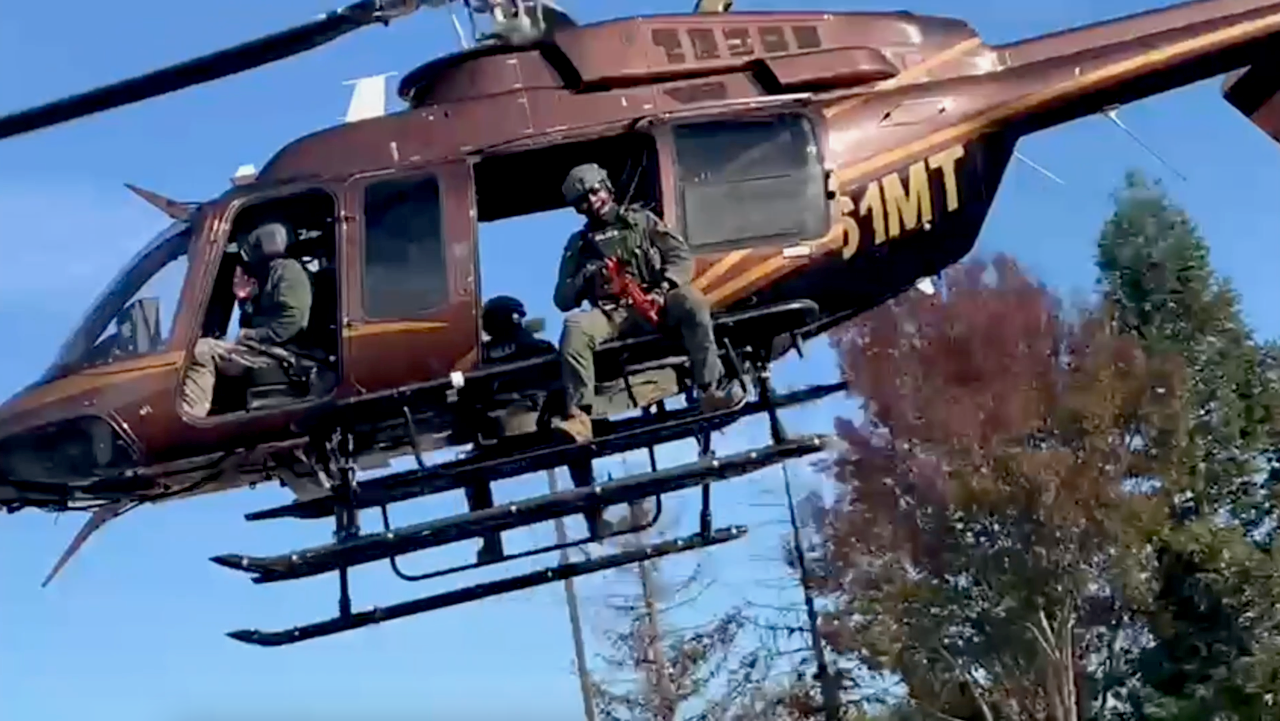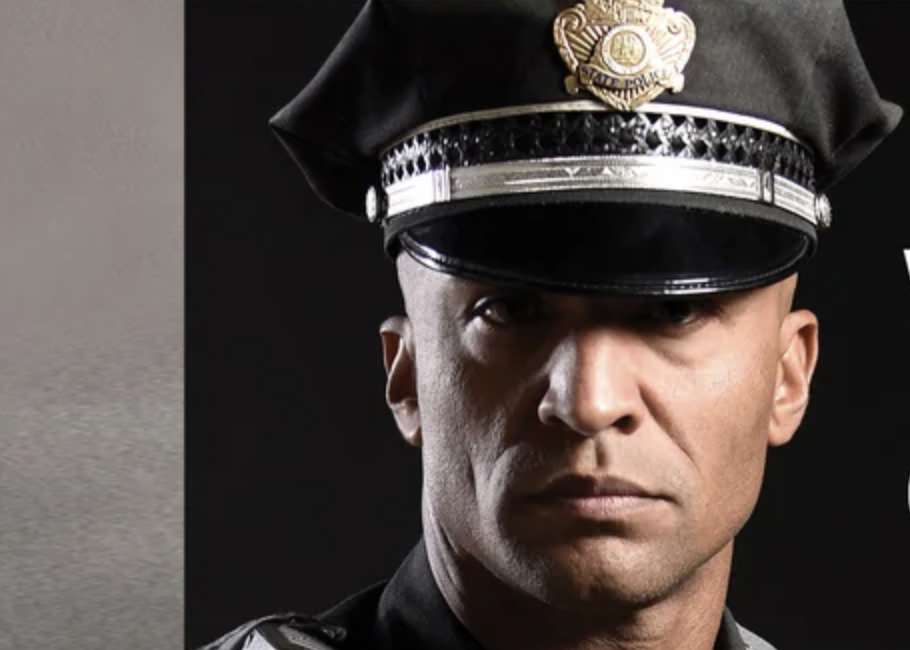This is the 13th installment in a series of profiles featuring DEA special agents, diversion investigators, chemists, and more. Learn about the tough but fulfilling, fascinating, and vital work these DEA personnel do, as well as the many different ways to get involved in fighting drug misuse. For our 13th profile, we will be interviewing Assistant Special-Agent-in-Charge Ryan. (In photo, Ryan practices infill/exfill as part of SRT training with DEA Aviation’s Tactical Helicopter Squad. Courtesy)
Source: getsmartaboutdrugs.gov
1. What motivated you to join the DEA?
Law enforcement runs generationally deep in my family, so the calling came very early. I was fortunate to know at a young age I was destined for law enforcement, I just didn’t know in which role. Feeling that sense of duty and responsibility to public safety, I researched and participated in multiple internships, but I also paid attention to my father’s career in local law enforcement and saw the most meaningful, rewarding, and fun experience he had was when he led a narcotics taskforce. That resonated and I soon realized I needed to figure out how to do that role for a career, rather than just for a couple years; that’s when I found the Drug Enforcement Administration.
2. What does an average day as Assistant Special Agent in Charge of the Special Operations Division’s Pharmaceutical, Precursor Chemical, and Internet Investigations Section (OSI) look like for you?
The DEA’s Special Operations Division (SOD) is a diverse entity comprised of hard-working men and women, representing 34 agencies including the partners from Five Eyes, an Anglosphere intelligence alliance. SOD supports global operations combatting drug trafficking and transnational drug crimes.
Here at the Pharmaceutical, Precursor Chemical, and Internet Investigations Section, we work in one of the epicenters of today’s drug threats – from the drug supply chain, to domestic manufacturing, targeting Mexican Cartels, and combatting the series of mechanisms aiding in advertising, sales, and trafficking of both fake pills and other illicit drugs responsible for killing tens of thousands of Americans each year. I have the pleasure to lead this highly skilled faction of both DEA and partner federal agencies, with no geographic boundary limitations.
 Ryan receives a Rising Star Award from Nextgov/FCW.
Ryan receives a Rising Star Award from Nextgov/FCW.
At SOD, we target the supply of manufacturing, the movement, logistics, illicit finance, and organizational leadership of the cartels. We are focusing on cyber-based technologies aiding in trafficking of precursor chemicals, largely from China and India, to drug production facilities in Central and South America, which then flood the U.S.
Each day brings a new challenge, where I may be briefing the highest level of the agency, to evaluating a new technology or developing a strategic way for mission effectiveness. We are involved in hundreds of investigations, both domestic and international. This position is both exciting and gratifying, as I often learn new things every day while supporting strategic global enforcement efforts of DEA’s mission. From Dark Web, cryptocurrency and money laundering, and counterfeit medication, to straight illicit fentanyl production with emerging synthetic drug investigations, we are charged with the utmost important role of reducing this emerging threat to American citizens and our youth.
3. What has been your proudest moment at DEA thus far?
As a Supervisory Special Agent with DEA and with close to 20 years on the job, I have led a blessed career taking me across the globe many times with assignments beginning at the Southwest border in Southern California, a four-year foreign assignment in Colombia South America, and then to the Bay Area of Northern California, where I not only ran a stand-alone office for a large area of responsibility, but also stood up and led a regional DEA tactical Special Response Team (SRT) for Central and Northern California DEA. I was fortunate and humbled to be a Team Leader, where I led the team tasked with executing the highest degree of dangerous and technical operations for DEA enforcement. DEA SRTs train to National Tactical Officers Association (NTOA) standards and fulfill our role professionally with pride and integrity, working as a true team to repeatedly succeed safely in one of the most dangerous roles in federal drug enforcement; executing high-risk search warrant and arrest operations.
While I am very proud to have served the public as a Special Agent in both domestic and foreign regions, I am also proud to be the father of two wonderful children. I focus to always do my best to make this world safer for them, so I regularly participate in demand reduction efforts, doing public speaking and school-based education on drug abuse and treatment efforts. To see the youth resonate and positively respond to drug prevention efforts during these demand reduction events makes the demand of the DEA career all worth it.

4. How can young people who wish to join DEA SOD’s OSI best prepare themselves for the job?
DEA is one of the only single mission federal agencies in the U.S., where we focus on one thing only, enforcing the Controlled Substances Act under the rule of law, where we are the best at our craft, as opposed to being a jack of trades. The SOD is generally comprised of highly motivated men and women with many years of experience. That is because of the nature of the position where we assist in bridging the gap between field cases and global operations, offering both information sharing between agencies, and in some cases mentoring the offices where they may not have the resources available to broaden their investigations to the potential they have. I would advise people interested in becoming a DEA Special Agent supervisor to first focus on understanding the foundation of the job, being the dynamic nature of law enforcement, which is appealing to individuals who thrive in a fast-paced and challenging environment. Do your job well with drive, respect, and honor; the rest will fall into place.
 Ryan presents at the “Tech Against Trafficking” symposium hosted by the United Nations’ International Narcotics Control Board.
Ryan presents at the “Tech Against Trafficking” symposium hosted by the United Nations’ International Narcotics Control Board.
5. The synthetic opioid fentanyl – often mixed into other drugs – is now responsible for tens of thousands of American deaths per year. How has the fentanyl epidemic changed your job?
Like any position in law enforcement, I have experienced highs and lows of the job, and with that, some unsavory situations related to how drugs affect families, living situations, and associated violence. I have also witnessed the change from drugs affecting the general health and social progress, to killing hundreds of thousands of people, which has been shocking.
Currently, my section and I are primarily focused on combatting this epidemic of illegal synthetic opioids, where we target organizations responsible for the precursor chemicals which make the deadly substances producing the number one cause of death in Americans 18-45 years of age; more than car accidents and more than suicide.
My section is also operational support for DEA’s global cyber investigations and associated coordination with private sector social media and online platforms being exploited by bad actors in the drug trafficking online space. Here we are forward-leaning on applying technology to leverage an inordinate amount of data that support cyber investigations related to pharmaceutical and precursor chemical investigations. With more than five billion Internet users globally, spending seven-plus hours a day connected online, producing more than 97 zettabytes of data in 2023, the dangerous drug traffickers exploiting these technologies are leaving breadcrumbs in a forest. It’s our job to find those breadcrumbs, trace their origin, and produce factual evidence to bring to justice those responsible for the poisoning of Americans.
The days of meeting a drug dealer in a dark alley are now replaced with a couple strikes of a keyboard and click of a mouse, where the dangerous drugs can show up on one’s doorstep. Drug sales and proceeds have gone digital and the related communication is largely end-to-end encrypted, creating additional challenges for law enforcement. We now have to leverage data science, collaborate with trust and safety teams from private sector industry, and rely on both commercial and proprietary analytic tools, combining these with experience and good old-fashioned police work, in an effort to keep up with the perpetual growth of cyber-based criminals. These roles have been very challenging as well as rewarding and I can still look forward to future challenges and opportunities within this great career.



